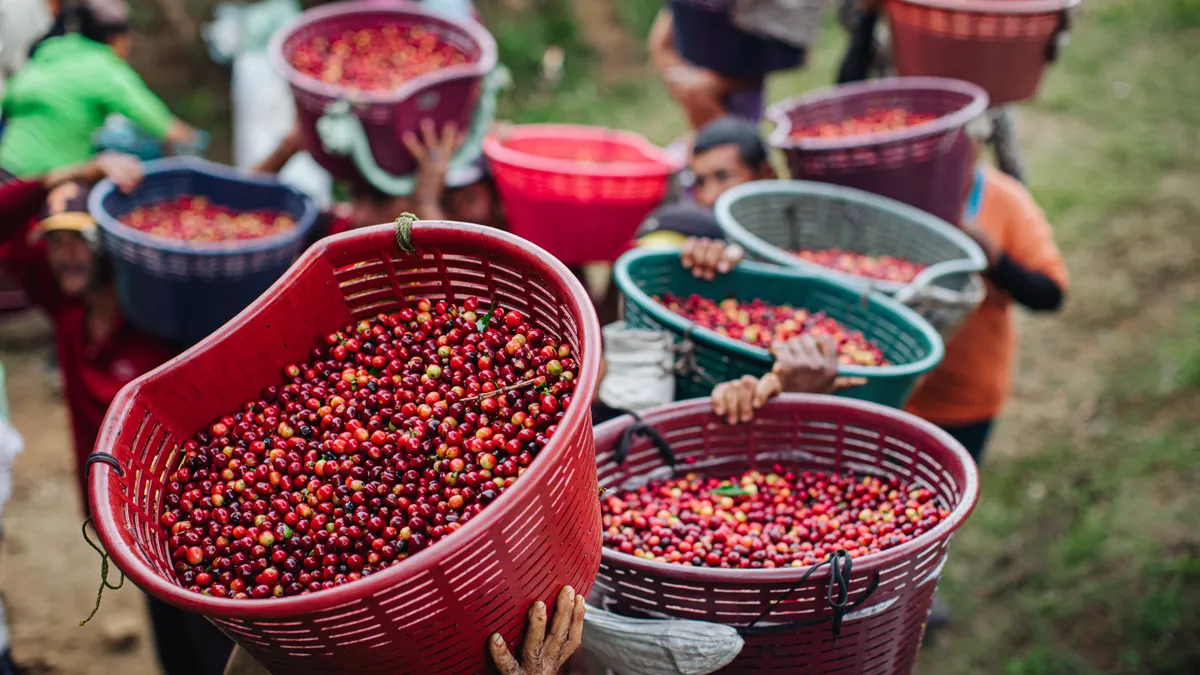Dive Brief:
- Starbucks is targeting greenhouse gas emissions by setting goals focused on farm practices and land usage to become carbon neutral for green coffee by 2030, the company announced Monday.
- Specifically, the company said it would provide coffee farmers with precision agronomy tools, distribute climate-resistant coffee plant varietals, and invest in protecting and restoring coffee-producing lands, first, in Columbia and Peru. Starbucks also said it would cut water usage for green coffee 50% by 2030.
- The goals prioritize reducing emissions in how green coffee is grown — which the company says is the largest source of emissions — before addressing the rest of the value chain, such as transportation, roasting or packaging.
Dive Insight:
Starbucks' plans for the coffee supply chain and to become resource positive were announced last year with few specifics on how the company would achieve it. Now, details show that the focus is on sourcing and land use.
With the company's network of 400,000 farmers in 30 countries, its sustainability agenda has an impact on the coffee world. But to create the resiliency and overall environmental goals needed to stave off future climate disruptions and costs, the company plans to collaborate and share information across the industry.
The coffee giant's plan to reduce greenhouse gas emissions in coffee at origin, or from farm to port, are in line with Starbucks' overall plan "to take less and give more to the planet" to become a resource positive company.
"For farmers and their communities, we know it is critical we work together to address the challenges they face associated with climate change which are making it increasingly difficult to grow high-quality coffee," Michelle Burns, senior vice president of Global Coffee, Tea and Cocoa at Starbucks, said in a press release. "By reducing carbon emissions and conserving water, we can help farmers be more productive while we are also contributing to a better planet and bringing coffee to customers in a sustainable way."
Nestlé also committed to reduce and remove carbon emissions from coffee sourcing this year through its Nescafé Plan. The company will use eco-friendly packaging and plans to be net-zero by 2050.
Both companies have plans to plant trees to combat deforestation and impacts of land use.
Starbucks has agreed to share "resources on regenerative agriculture, precision agronomy and farm economics" through a sustainability project with 100 farmers in Colombia, over a five-year period.
To reach its water conservation goals, Starbucks will invest in ecological wet mills, make its water processing operations more efficient and create water replenishment projects in high water risk coffee communities.
The company is partnering with Conservation International on its carbon neutral coffee goals and methodologies and following the Science Based Targets initiative.














